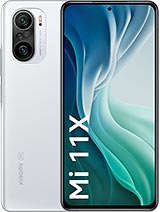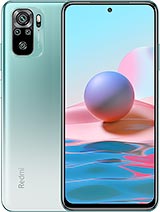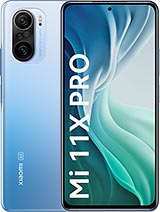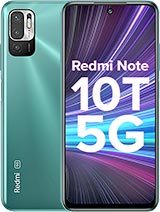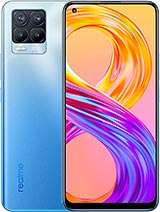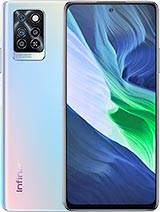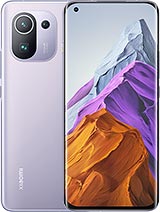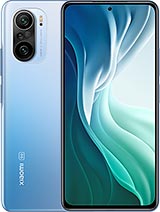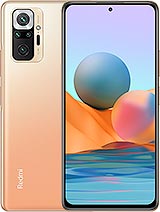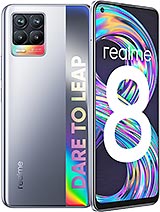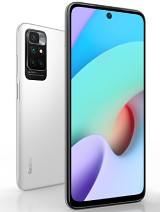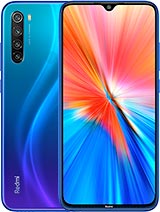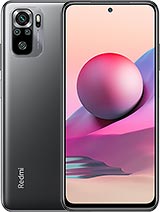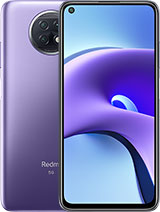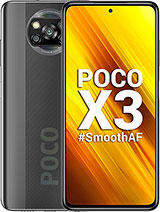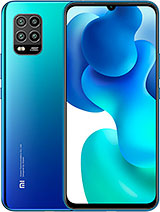Poco X3 Pro vs Mi 11 Lite vs Redmi Note 10 Pro vs Realme 8 Pro | Best Budget Phones 2021 Compared! By Tech Spurt
So, if you're looking for a fresh new budget smartphone right now, I'm not going to lie you're pretty much and that's certainly not because there's a lack of decent, cheap, affordable, mobiles right now. In fact, it's quite the opposite problem. There's a perfect one, launching pretty much every single freaking day. So how on earth do you actually choose which one's best for you? Well, hopefully, I'm going to try and make that decision, making process a little easier by comparing four of the best budget blows to land in 2021 we've got the Poco x3 pro we've got the Xiaomi Redmi Note 10 pro we've got the Xiaomi mi 11 lite and finally, last but not least, we've got the realm 8 pro there's a full side by side comparison tested out the battery life, the camera tech, the performance all that good stuff and for more on the latest greatest tech. Please do poke subscribe and ding that notifications bell cheers okay. So, let's start with design and first, the Realme 8 pro is technically the baby of the bunch at just 6.4 inches, not exactly compact, because compact phones no longer exist. Next up is the Xiaomi mi 11 lite at 6.55 inches and then finally, the Redmi Note 10 pro and the Poco x3 pro, which are both 6.67 inch behemoths you're, finding a small budget smartphone in 2021, pretty much impossible. The real meat pros bezels are quite thick, though, making it about the same sort of dimensions overall as the me11 light, and then you've definitely got a hop up to the Redmi Note 10 pro and Poco x3 pro with your proper hand, fillers now flip all four around, and you'll see they sport very different designs on that ass end, although they are all constructed from plastic uh, thankfully they are all pretty durable so far as well.
Touch wood got a couple of tiny little scratches here on the bottom of the Redmi. Note 10 pro uh just right there, but that's that's about it so far, which design you personally prefer will, of course come down to your own tastes. I'm a big fan of the Redmi Note 10 pro. I think it's quite understated, but very smart to me, like the camera chassis too. Furthermore, I also really like the fact that it's quite a matte finish here on the Redmi Note 10 pro as well, so it does a perfect job of hiding, scuffs and fingerprints and other marks as well as does the real me8 pro, though you do have that rather controversial branding all across the back end.
The Poco x3 pro is definitely my least favorite, though I just think it looks rather cheap and chatty to be honest and, of course, that massive Poco Brandon not going to help kind of got mixed minds about the Xiaomi me 11. On one hand, you've got that lovely mirrored finish, which is great if you've got hair to do on the go, not really a problem for me, but that mirrored finish also picks up greasy prints far too easily and looks a bit of a state. But then, on the other hand, the m11 is also the lightest in this group by quite some way, just to shade over 150 grams. It is seriously featherweight on briefly dodging back to the subject of durability. The Poco x3 pro is the only one here with a gorilla glass.6 display for added reassurance do get gorilla glass, 5 on the Redmi Note 10 pro and the mi 11 light though, and that Redmi Note 10 pro is also ip53, splash resistant as well, so absolutely fine in a bit of a torrential spring downpour, which is always handy here in the UK, although the others can take a good old splashing and get quite moist without any trouble as well and on the subject of software, all four of these smartphones rock the same OS, it's android 11, but it is presented in a slightly different fashion. So what you've got slapped on top of android on the polo, the Redmi and the Xiaomi mi 11 lite is Xiaomi's very own mini version 12.
, although in the case of the Poco x3 pro it's technically the Poco launcher or as you can see, there me UI for polo, but there's bugger, all difference really, and the boo still has a bit of a dodgy reputation in uh some circles. For being a little, buggy uh and being filled with ads, neither of which are particularly true, I've found it can be a little quirk some here and there, but no worse than the likes of color OS or Realme UI, which comes on the realm 8 pro. The good news, certainly for my viewpoint, is that you do get stuck android vibe on all three of these. With your typical Google features like that Discover feed you've got an apps trade to bury away any apps. You don't really use that often, so you don't have to have them all slathered around your desktop, stuck away in folders, all that kind of messy stuff.
Now one of the UI features I really like in mini 12 is the fact you can drag down the notifications bar with swipe on the left side of the screen or the nifty control center, with a swipe on the right side of the screen like so, and that just gives you fast access toggles, you can play around with all your smart home, goodies, nice and quick and simple, absolutely love it. That, sadly, isn't a feature you get here with Realme UI, it's just your bug, standard notifications bar that said, a lot of the same features are present in me. UI and Realme UI. So, for instance, you've got a bit of one-handed help with both of these smartphones. So you can, you know, drag down that screen towards the bottom.
End of the display makes it so much easier to use with the on emit, and you can do the same in me. UI you've also got an always on display in both mini and real me. I, although, unfortunately, the Poco at pro, does not support an always on display, because it's an IPS screen you've got all sorts of customization and personalization options. Real me, UI does actually make it a little easier than the UI, because you've got this fast access, personalization section where you can change up the icons, the grid layouts, the colors, all that stuff. To be honest, I could bang on for hours about the similarities and differences between me UI and realm UI, but I've done dedicated videos on both those launches just go check.
Those out for a bit more now, as far as the security goes, the real media pro is the only one here with an in-display fingerprint sensor, and sometimes it doesn't work entirely, as you would hope, come take a couple of goals to actually get in there. The other three phones in his best budget phone, a roundup, all have an edge mounted fingerprint sensor. It's basically built into the power button and in all three cases, nice and swift and responsive, really, really good stuff, and I thought these phones also support a bit of face recognition as well. So as long as the lighting is not too CAC I'll just scan for your mug, and you're, pretty much straight in there more often than not. So it's a good alternative, as long as obviously you're not out and about and wearing a face mask.
As for the highly exciting subject of storage. Well, in the case of the Xiaomi mi 11 light, you've got a choice of 64 or 128 gigs, the Redmi and the Realme phones, both come with 128 gigs as standard and then the Poco x3 pro offers you either 128 or 256 gigs plenty of space for your stuff, and do note that the 11 light, while offering the least amount of storage in its base model, also doesn't come with micro, SD memory card support. All the others do now. As for the screen tech, well, the Poco x3 pros I briefly mentioned before- is an IPS panel. Whereas all three other budget blows here offer OLED displays, and you can clearly see the difference when you're watching movies, just checking out pictures or whatever, on all four side by sides that IPS panel on the poker 3 pro is obviously cooler than the others.
It does offer crisper whites, but also less punchy vivid colors when the display settings are matching the other phones and while the Poco x3 pro the Redmi Note 10 pro and their Xiaomi mi 11 literal HDR 10 ready. It's only the Redmi Note 10 pro and the mi 11, like that. Actually stream HDR content in streaming services like Netflix, unfortunately, the poker XD pro still just streams in HD, hopefully that HDR support will come to the x3 pro in an update soon. But it's only really when you push the four of these side by side that you really notice these little differences between them. To be perfectly honest, all four of them are apps that you find for kicking back with some Disney plus Netflix, whatever you fancy in your spare time, full HD plus resolutions on a lot of them.
So you get nice crisp details, despite the fact that these are big bloody phones. Unfortunately, another area where the Realme airport is inferior to the other smartphones in this roundup is the refresh rate. As you can see here, you've got a 120 hertz refresh on the Poco x3 pro and the Redmi Note 10 pro and the Xiaomi mi 11 lite that drops to a 90 hertz, but still nice and smooth real meat. Pro is just 60 hertz standard and yes, the overall effect is somewhat exaggerated by these animations here, but you will notice that things are a bit smoother when you're zipping about in the UI and using supported apps, and all these smartphones boast a perfectly respectable stereo speaker setup for your audio as well all except for one. Sadly, that's the Realme it pro again.
Sorry Realme now with that model, speaker output is still absolutely fine. I'll tell you what the biggest defender in this group is. Definitely the Xiaomi mi 11, because, while all the others have a headphone jack, this thing completely calls it, which is actually quite rare for a budget smartphone. Thankfully, the Bluetooth chops have been absolutely fine, but it's still rather annoying. So, let's jump onto performance and the realm 8 pro uses the fairly basic snapdragon 720 g chipset.
That's been upgraded to the snapdragon 732g in both the Redmi Note, 10 pro and the Xiaomi mi 11 lite, but the winner in this roundup of the best budget smartphone so far in 2021, is that Poco x3 pro, which uses the fresh snapdragon 860 chipsets. Now this thing packs the arena 640 GPU and that is backed up by a liquid cool technology. Basically a bit of copper heat, pipe action, partnered with some sexy graphite layers, perfect for gaming and quite demanding titles. The likes of gentian impact did still judder a little on the default medium settings here and there. So I did have to bump it down a bit, but then it was perfectly playable, but the good news is, if you just lightly, dabble in a bit of android gaming here and there, you sort of play less demand in titles like PUBG or Call of Duty mobile.
Then absolutely no worries with the other three smartphones here. They will all do the job. Fine, all four displays boast. A fast touch response rate, so your pokes and swipes and jabs are instantly replicated on screen, giving you the edge over the competition when you're playing online shooters and the like, and both me UI and Realme UI sport, a proper gaming mode as well. So you can follow your resources into your game.
Block notifications, all that good stuff, just to make sure again that you've got the edge. Do note, however, that none of these smartphones are 5g compatible, so yeah you're stuck in good old LTE for the future. Unfortunately, if you do want a budget 5g smartphone, I have rounded up my favorites uh right here on textbook in a separate video. So go check that out. You can't be bothered to do that, and the Xiaomi mi 10 t light is one of my favorites definitely check that bad boy out and when it comes to the battery tech.
Well, the battery capacity is something very different on all four of these budget smartphones, the mi 11 lite, is unfortunately the loser, as well as the spec score, with a 4 250 million battery. But despite having the smallest capacity sell in this roundup, I've still found it can last a fairly intensive day from morning to when you're tucked up with teddy without a grumble. Next up is the Realme 8 pro with a 4, 500, William cell. Then the Redmi Note 10 pro sports, a rather whopping 5020 William cell, but the Poco x3 pro is the winner here with a 5160 William battery. But again that's only as far as the specs go, and I found that all four of these smartphones will happily last a full day of fairly intensive use without demanding a recharge, and things certainly got interesting when I lined up all four of them charged them all to full and then did a bit of battery drain test by streaming Disney plus non-stop.
In this case, the Poco x3 pro, which boasts the biggest capacity battery, remember, actually performed the worst each hour of streaming over Disney plus resulted in around a 10 drop compared with roughly 8 per hour on the other smartphones, of course, that could be down to a couple of different factors: the fact that it's got that snapdragon 860 chipsets in it, whereas the others tend to stick with their more energy, efficient, snapdragon, 7 series, chipset and, of course, you've got an IPS panel as opposed to an OLED, as for when the batteries are actually drained. Well, it's 33 watt fast charging on all four of these smartphones. Oh, no wait! No! It isn't the Realme actually wins this one, but the 50 watt fast charging support and as if that wasn't enough real me, actually bundles a 65 watt charger in the box. That'll do your laptops and all sorts good job, Realme good job. So, let's finish up with the camera tech and the Redmi Note 10 pro and the Realme 8 pro get down to some proper willy wave and when it comes to their camera, specs, both sporting, a 108 megapixel primary shooter, the Xiaomi mi 11, light dials it down to a 64 megapixel shooter, while the Poco x3 pro comes in with a modest 48, megapixel sensor, of course, as always with technology, bigger numbers does not necessarily equal better you're, not guaranteed better photos and videos with those 108 megapixel shooters, which actually use 91 pixel benefits.
What you end up with is a photo with about the same resolution as that realm 8 pro now. Speaking of that realm 8 pro, it certainly impresses on a few levels, pumping out photos packed with finer detail, while those warmed up colors really pop, even with the AI mode, knocked off. Of course, if you prefer more natural, looking picks, you will want to look elsewhere. Real me also offers up a huge number of filters to play around with in portrait mode, although you have to be careful as it is easy to go overboard and produce a photo with crazy amounts of blur, while the other phones here produce more understated, but still very slick, looking results, oh and if you want to be shooting any moving subjects like kids or pets or anything of that sort of ilk, I'd definitely say avoid that Realme 8 pro as well, because this was definitely the worst offender when it came to blurry shots as for low light, snaps, all four phones here, server paint night mode and once again the Redmi Note 10 pro the mi 11 light and the Poco x3 pro churn out similar picks, while the realm 8 pro captures far warmer shots with less natural colors. All four of these budget blowers support an 8, megapixel ultra-wide angle, lens, which is handy if you need a very different viewpoint for a scenery, shot or capturing lots of friends having a lovely old time together when that actually becomes a thing again.
You've also got a 5 megapixel telemark lens on that me 11 light and the Redmi Note 10 pro, whereas the other two phones, sport, a more basic 2, megapixel macro shooter and frankly, I wouldn't bother the video chops are pretty similar and all for these smartphones, you can shoot full HD footage at either 30 or 60 frames per second. Otherwise, you can also bump it all the way up to 4k ultra HD resolution at 30 fps. You do get a great selection of filters and effects here on the real me, a smartphone compared with the others, including the ability to turn everything in the background black and white, or highlight specific colors as long as you keep it all at full HD resolution, those don't work at 4k uh, whereas here on the uh, the UI smartphones, it's a bit more of a basic filter selection, but honestly, who really gives a sh, and you've got the usual bonus shenanigans like full pro manual controls on all four of these smartphones as well, and then around the front. You've got a 20 megapixel selfie shooter here on the Poco x3 pro uh, whereas it's a 16 megapixel on all the others, and you know what I'll do the job? Absolutely fine, no matter your choice get nice crisp effort. You can also uh dive on into the portrait mode and get a nice bit of both action behind you.
If that's what you fancy me, I don't really tend to take many selfies, and you can probably tell why it's not right. There, in a nutshell, is how these four budget blows stack up to one another but which one's going to be best for you. Well, my pick of the bunch is personally the Redmi Note 10 pro. I think it's the most consistent, the most all-round superstar smartphone of the bunch, although if you're all about the performance you'll, definitely be more tempted by the Poco x3 pro now, my poker review is about to go, live here on tech expert, and then I'll be swapping to the me11 live to do a full review of that. My review of the other two smartphones is already live right now here on the channel.
So if you go check those out for a more in-depth look at each of these phones in turn, please do poke, subscribe and ding that notifications bell, if you haven't already and have yourselves a fantastic rest of the week, cheers everyone loves you. You.
Source : Tech Spurt

